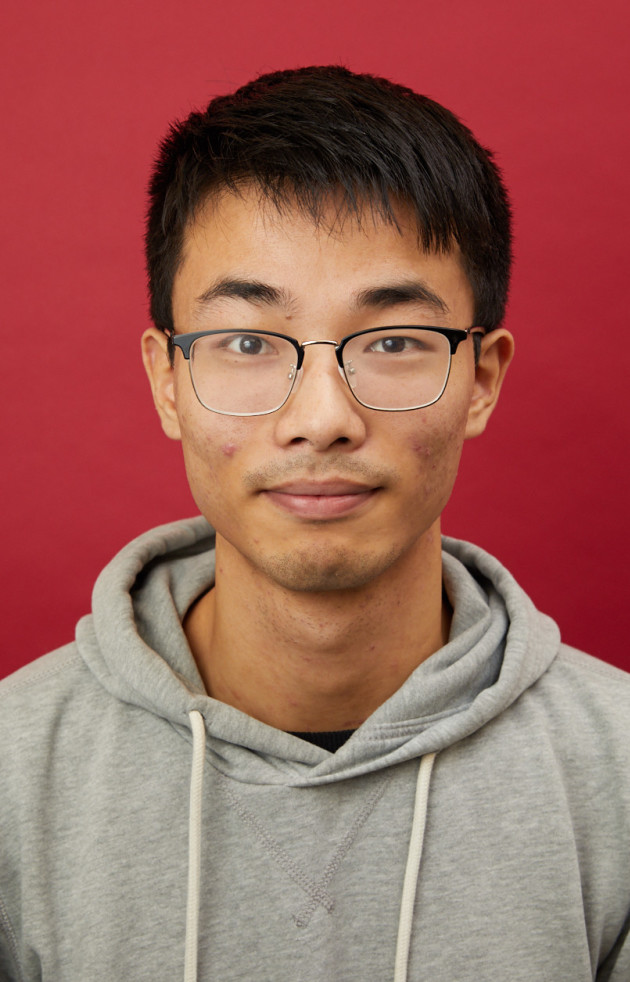The winners of the 2020 TSM CDT prizes have been announced:
Materials Design Graduate Research Prize
Kang Wang and Mario Zauchner
 Kang receives this prize for his impressive progress studying the properties of oxide nanoparticles under negative pressure. For this, he was able to bridge atomistic and larger length scales by relating first-principles calcuations to the Landau theory of phase transitions and discovered that the mechanical instability that drives structural transformations in these systems derives from phonon softening away from the Gamma point. In addition, in a collaboration with an experimental group Kang studied the dependence of the layer-breathing vibrational modes on the degree of lithiation in lithium-intercalated graphite electrodes.
Kang receives this prize for his impressive progress studying the properties of oxide nanoparticles under negative pressure. For this, he was able to bridge atomistic and larger length scales by relating first-principles calcuations to the Landau theory of phase transitions and discovered that the mechanical instability that drives structural transformations in these systems derives from phonon softening away from the Gamma point. In addition, in a collaboration with an experimental group Kang studied the dependence of the layer-breathing vibrational modes on the degree of lithiation in lithium-intercalated graphite electrodes.
Read Kang’s paper here: https://pubs.acs.org/doi/abs/10.1021/acsenergylett.1c00494
Mario receives this prize for developing a new machine learning approach that allows the efficient calculations of the static polarizability of atomic clusters and nanoparticles. In this project, Mario first carried out ab-initio calculations of the polarizability of hydrogenated silicon clusters and then used these results as a training set for a machine learning technique. He tested a range of machine learning approaches and identified the most reliable one which he then used to calculate polarizabilities of large clusters that cannot be obtained from first-principles methods.
Read Mario’s work here: https://arxiv.org/abs/2101.03854
Materials Design Advanced Graduate Research Prize
Carlos Ayestaran Latorre and Zachary Goodwin
Carlos receives this prize for his outstanding studies on the chemical properties of surfaces. For example, he used density-functional theory to study the adsorption of surfactants on iron oxide surfaces and developed novel force fields for this system. Recently, he also investigated the dissociation of water molecules on doped diamond-like carbon surfaces and demonstrated how doping with different elements can affects hydrophilicity and ultimately biocompatibility and tribology.
Read Carlos' papers here:
https://pubs.acs.org/doi/abs/10.1021/acs.jpcb.9b02925
https://www.sciencedirect.com/science/article/pii/S0008622320308988
https://pubs.acs.org/doi/abs/10.1021/acs.jpcc.9b11787
Zachary receives this prize for his excellent work on twisted bilayer materials. For example, Zac developed a computer code to study the effect of Hartree interactions in twisted bilayer graphene whose unit cell contains more than 10,000 carbon atoms. He demonstrated that the long-ranged interaction between electrons gives rise to important changes in the band structure that depend sensitively on the amount of electron or hole doping. He also studied the effects of this interaction on the magnetic phase diagram of twisted bilayer graphene and investigate the electronic properties of double bilayer graphene as function of the bilayer stacking arrangement.
Read Zac’s papers here:
https://iopscience.iop.org/article/10.1088/2516-1075/ab9f94/meta
https://journals.aps.org/prb/abstract/10.1103/PhysRevB.103.195127
https://journals.aps.org/prb/abstract/10.1103/PhysRevB.102.155146
Outreach prize
Emanuele Galiffi
Emanuele receives this prize for his consistent commitment to outreach. Most recently, Emanuele played a vital role in volunteering on the Blackett Academy, a tutoring programme for A-level physics students, which aims to help local state school pupils overcome the impacts that the pandemic has had on their studies.


